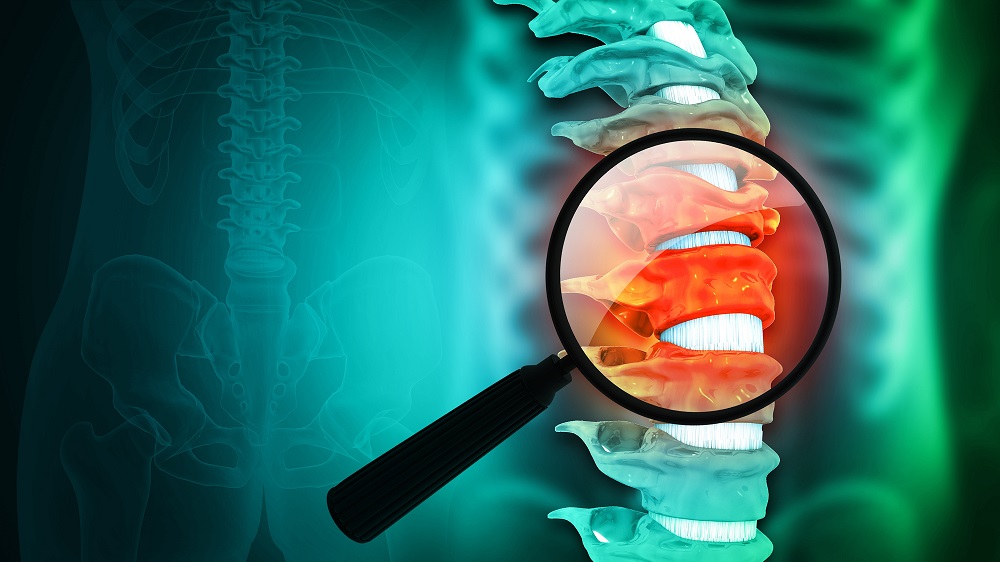In Aging Cell, researchers have published a potential method of ameliorating disc degeneration that focuses on the cells living in a low-oxygen environment within the discs.
Living on low oxygen
Yesterday, we discussed how an antioxidant compound was found to alleviate intervertebral disk degeneration (IVDD). This related paper focuses on a tissue that is already naturally very low in oxygen: the nucleus pulposus. As these researchers explain, nucleus pulposus cells (NPCs) live in an environment with very few blood vessels. The nutrients these cells get are derived from capillaries in the extracellular matrix surrounding them.
In this uniquely hypoxic environment, hypoxia-inducible factor 1α (HIF-1α) plays a major role in metabolism. It governs glycolysis, a process of burning energy that doesn’t require oxygen, and without it, NPCs die off quickly [1]. It has been found to be related to ferroptosis [2], a cause of cellular death that occurs with an excess of iron [3].
HIF-1α has also been found to play a role in RNA regulation and metabolism, specifically N6-methyladenosine (m6A), which plays a major role in how RNA does its transcriptional job and is being investigated for its relationship to aging [4]. Specifically, HIF-1α regulates YTH N6-methyladenosine RNA-binding protein 1 (YTHDF1), which is a key part of m6A modification [5].
Building on that previous work, this particular study focuses on the relationship between HIF-1α, YTHDF1, and the survival or ferroptosis of NPCs.
Following the long trail
First, the researchers engaged in a cellular study, cultivating NPCs in a low-oxygen environment meant to mimic their natural habitat. Some cells were taken from people with severe spinal degeneration (the IVDD group), while a control group had cells derived from people with an unrelated disease. The IVDD group had far less GPX4, a compound that inhibits ferroptosis.
The researchers then administered erastin, which induces ferroptosis, to normal cells and to cells that overexpress HIF-1α. The overexpressing cells had less free radical iron in them, and they had lower levels of malondialdehyde (MDA), which represents the damage caused by this free radical iron. Reactive oxygen species behaved the same way in this experiment; HIF-1α, despite being induced by hypoxia, prevented oxidative damage in this case.
The study then turned to YTHDF1. Like with GPX4, the IVDD group had far less YTHDF1 than the control group. Further experimentation found that, as expected, more HIF-1α led to more YTHDF1 while inhibiting HIF-1α led to less of this RNA-binding compound. Like with HIF-1α, YTHDF1 was found to have positive effects against ferroptosis, and blocking YTHDF1 prevented HIF-1α from having its positive effects. This demonstrates that HIF-1α’s effects against this form of cellular death are due to its upregulation of YTHDF1.
Taking a closer look, the researchers mutated YTHDF1 so that it would not bind to RNA properly. This form of YTHDF1 was not found to affect ferroptosis. Specifically, unmodified YTHDF1 was found to affect SLC7A11, which these researchers found to affect GPX4, the ferroptosis-inhibiting compound that the IVDD cells had less of. These findings were confirmed in a rat model; rats that had their discs damaged through puncture wounds recovered better with upregulated YTHDF1, but not if SLC7A11 was knocked down.
This long chain of biological causation provides an interesting question for future researchers: where is it best to intervene? Future experiments may focus on restoring HIF-1α to aged cells, using RNA-based interventions may be best, or administering GPX4 might turn out to be the more practical approach.
Literature
[1] Merceron, C., Mangiavini, L., Robling, A., Wilson, T. L., Giaccia, A. J., Shapiro, I. M., … & Risbud, M. V. (2014). Loss of HIF-1α in the notochord results in cell death and complete disappearance of the nucleus pulposus. PloS one, 9(10), e110768.
[2] Guan, Z., Jin, X., Guan, Z., Liu, S., Tao, K., & Luo, L. (2023). The gut microbiota metabolite capsiate regulate SLC2A1 expression by targeting HIF‐1α to inhibit knee osteoarthritis‐induced ferroptosis. Aging Cell, 22(6), e13807.
[3] Ru, Q., Li, Y., Xie, W., Ding, Y., Chen, L., Xu, G., … & Wang, F. (2023). Fighting age-related orthopedic diseases: focusing on ferroptosis. Bone research, 11(1), 12.
[4] Wu, Z., Ren, J., & Liu, G. H. (2023). Deciphering RNA m6A regulation in aging: Perspectives on current advances and future directions. Aging Cell, 22(10), e13972.
[5] Li, Q., Ni, Y., Zhang, L., Jiang, R., Xu, J., Yang, H., … & Wang, X. (2021). HIF-1α-induced expression of m6A reader YTHDF1 drives hypoxia-induced autophagy and malignancy of hepatocellular carcinoma by promoting ATG2A and ATG14 translation. Signal transduction and targeted therapy, 6(1), 76.







